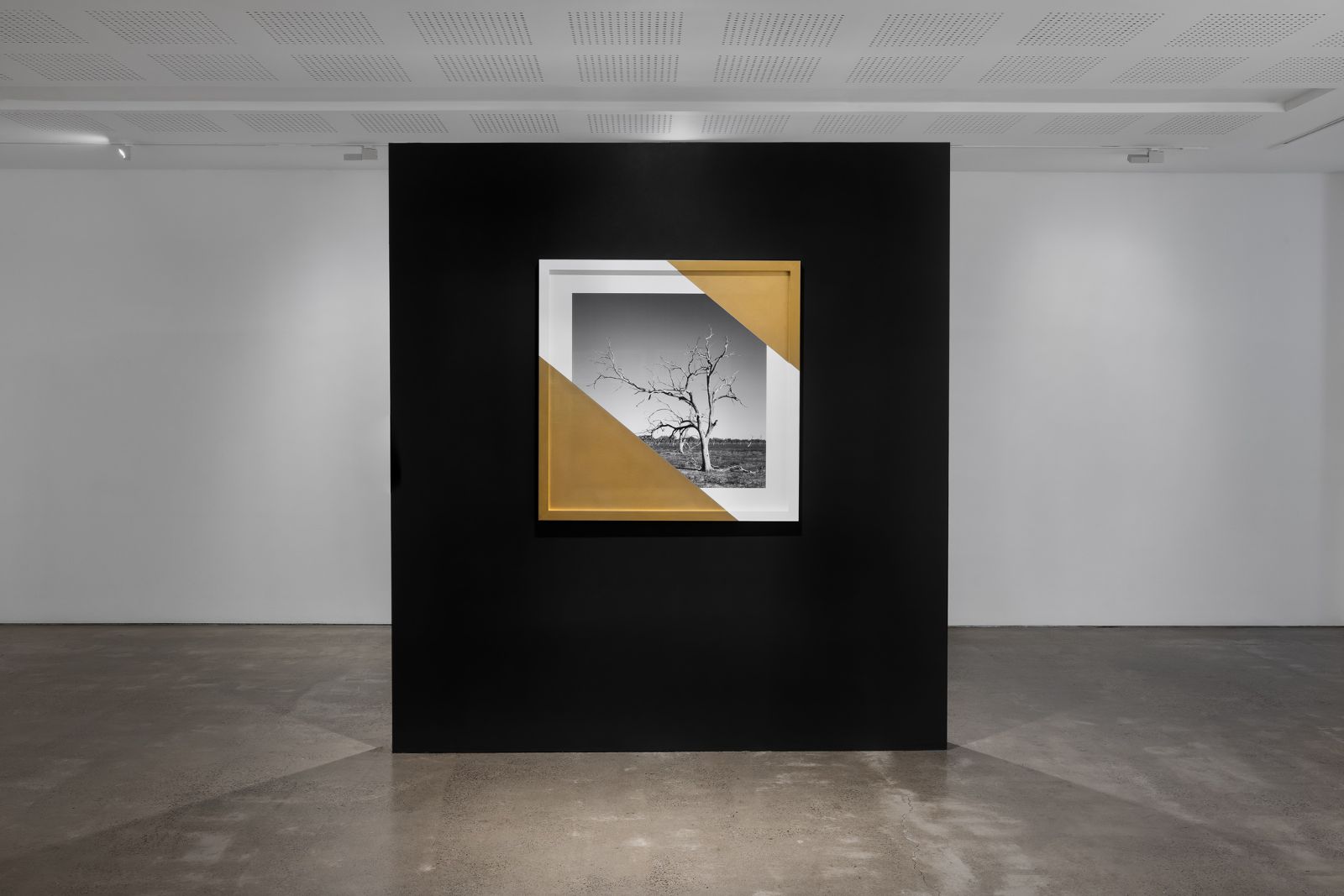
James Tylor: Turrangka… in the shadows at UNSW Galleries, Sydney, is a love letter to Kaurna language and culture. It is poetic, full of substance and interpretation, melancholy and yearning. Darkness is a mystery and an answer: some things can’t be known, but a lot of what is revealed from darkness can be.
Curated by Leigh Robb, Curator of Contemporary Art at the Art Gallery of South Australia, the exhibition is a breathtaking survey of the last ten years of Tylor’s practice. It brings together unique daguerreotypes, photographic prints, Kaurna cultural belongings and furniture as a poignant remembrance that the world’s oldest cultural institution exists all around us. Listening to the birds, walking through tall grasses, watching the sun rise and knowing it will set; Country is ready to teach and Tylor wants us, the viewer, to learn.
Tylor attests to this in his 2017 series Turralayinthi Yarta, the first works you encounter within the exhibition. Translated into English ‘to see yourself in the landscape’, Tylor gives viewers the literal tools to understand Nunga Yarta[1], to position themselves as active participants within ancient landscapes, where language and painted motifs coalesce to shift the purpose and spirituality of territories and Ancestral belongings. These photographs and cultural belongings serve to exist not just as ‘objects’, but as part of community; they, like Tylor in his role as their maker, are sentient subjects sharing an exhibition space.
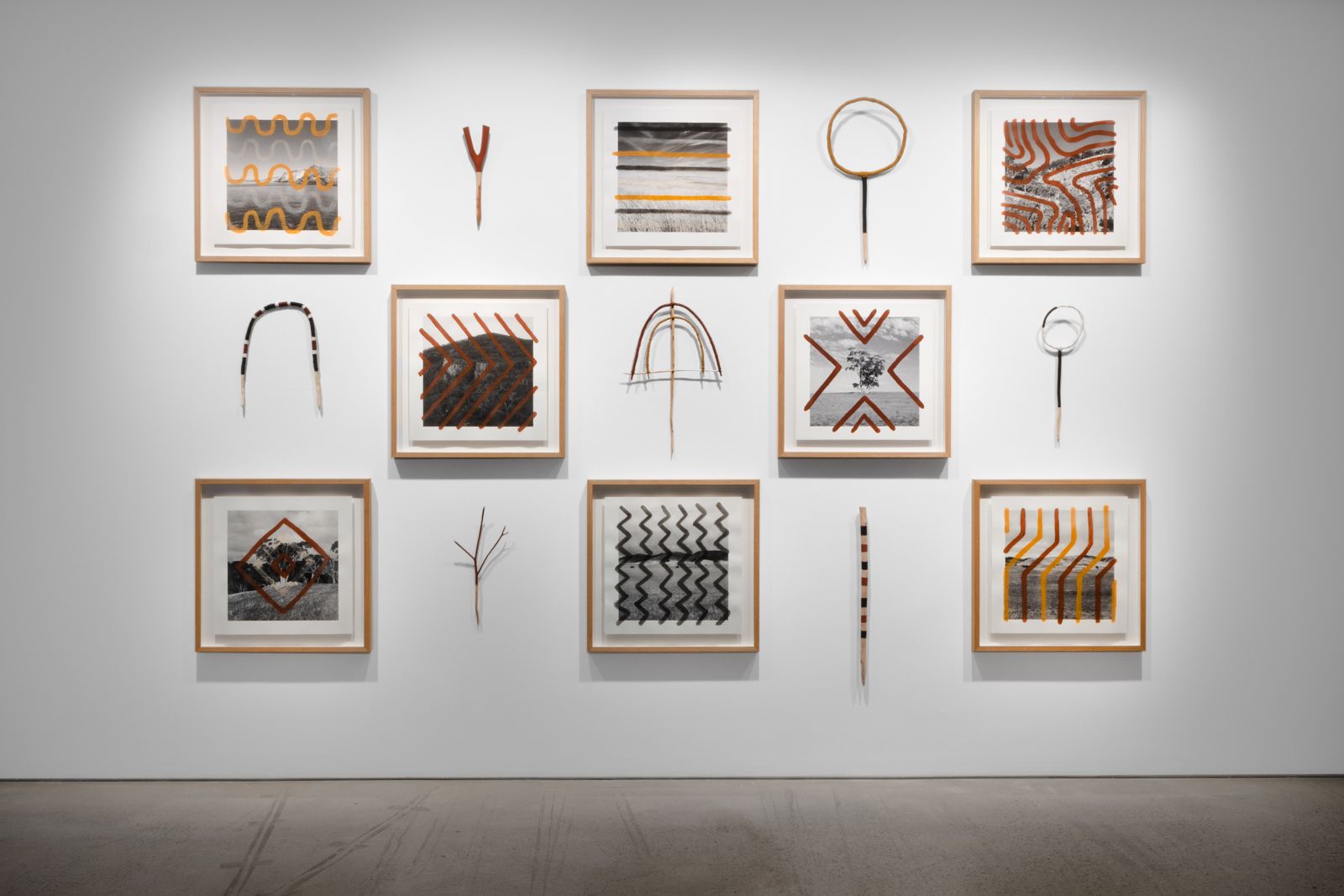
From an Untouched Landscape (2013 – 2020) and Un-resettling (2013 – 2023) are two major bodies of work presented in the central gallery. They move very differently from one another through time and space. But, overall, they demonstrate the complexity and connectivity of beliefs, perspectives and knowledges of Tylor’s Kaurna ancestry, and indeed Aboriginal identity Australia-wide, interrupted by the colonial project that sought to destroy Indigenous methodologies.
From an Untouched Landscape sprawls across the gallery’s longest wall, with wirri (clubs), ipila (clap sticks), kaya (grasstree spears), and wadna (climbing sticks) installed between, above and below photographs of Marri Yarta, Peramangk, Ngadjuri and Kaurna Country. The haunting black spaces in these photographs are pictorial motifs that are not merely ambient; as viewers, we must bridge omissions within the landscape. Tylor purposefully highlights–through redaction–the deliberate dispossession of Aboriginal people from their lands, the silencing of language and the attempted erasure of cultural practice. It is Un-resettling, hung on the wall perpendicular, which discloses Tylor’s (re)learning of what was shown as stolen in the previous series. It documents his focused re-spiriting of historical Kaurna technologies such as the construction of dwellings, building trappings, and the crafting of tools and weapons for hunting—a powerful trans-historic call and response.
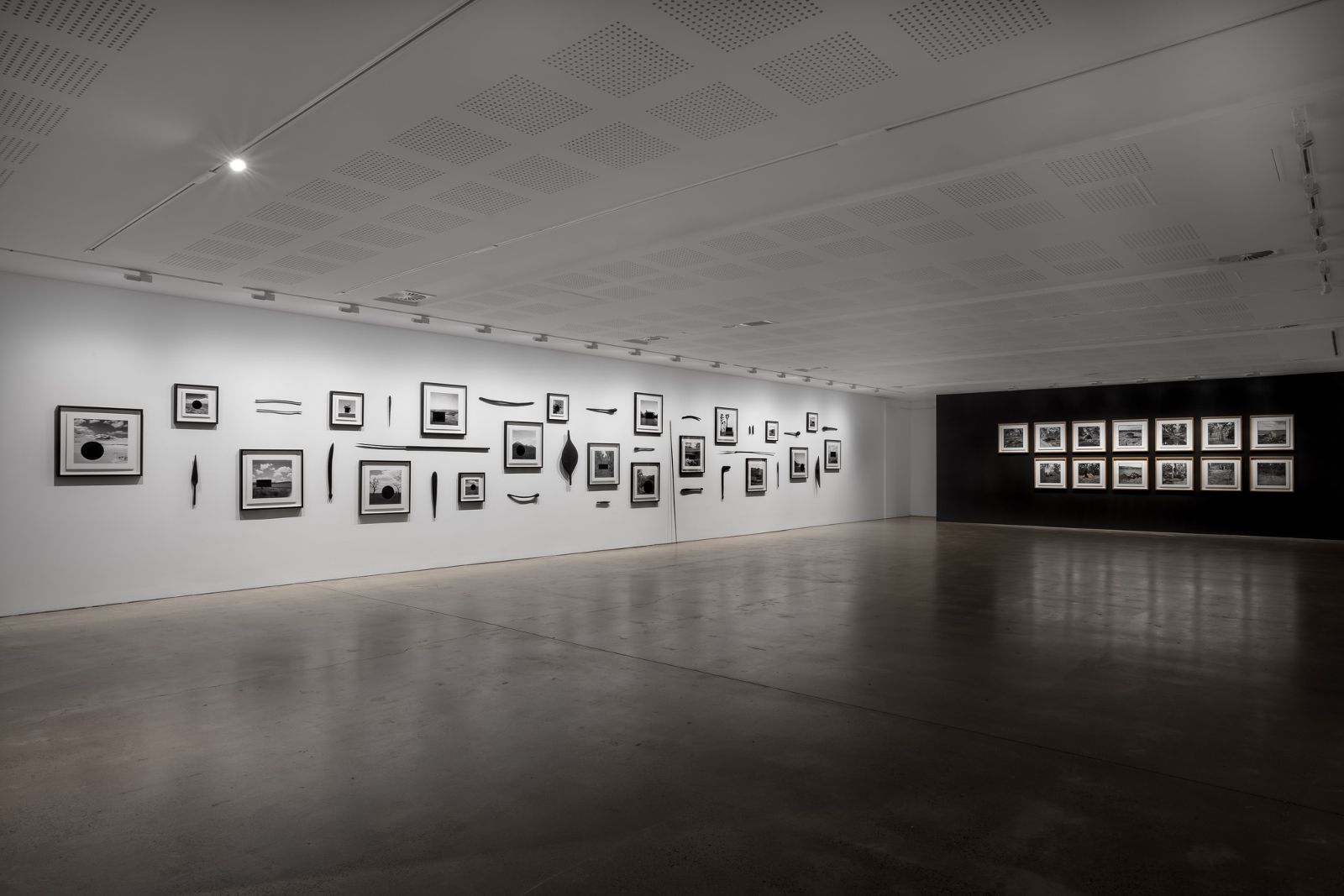
The exhibition draws its title from the Kaurna word turra, which can be known as ‘shadow, reflection, image, or mirror,’ and reveals Tylor’s ongoing exploration into the mechanisms of photography, in particular the daguerreotype. It is an important medium to both Tylor’s practice and his identity as a Kaurna man, for when the daguerreotype was introduced to Tarntanya/Adelaide and was achieving commercial success, Kaurna people were in the process of being colonised.
Each of Tylor’s daguerreotypes are unique images preserved on a fragile silvered copper plate. He uses the Becquerel process, that is, utilising red light and the sun to expose the plate and develop an image. In the nineteenth century, daguerreotypes were usually framed behind glass in gold and red velvet cases, a reference Tylor subtly makes using gold tape to border his finished works.
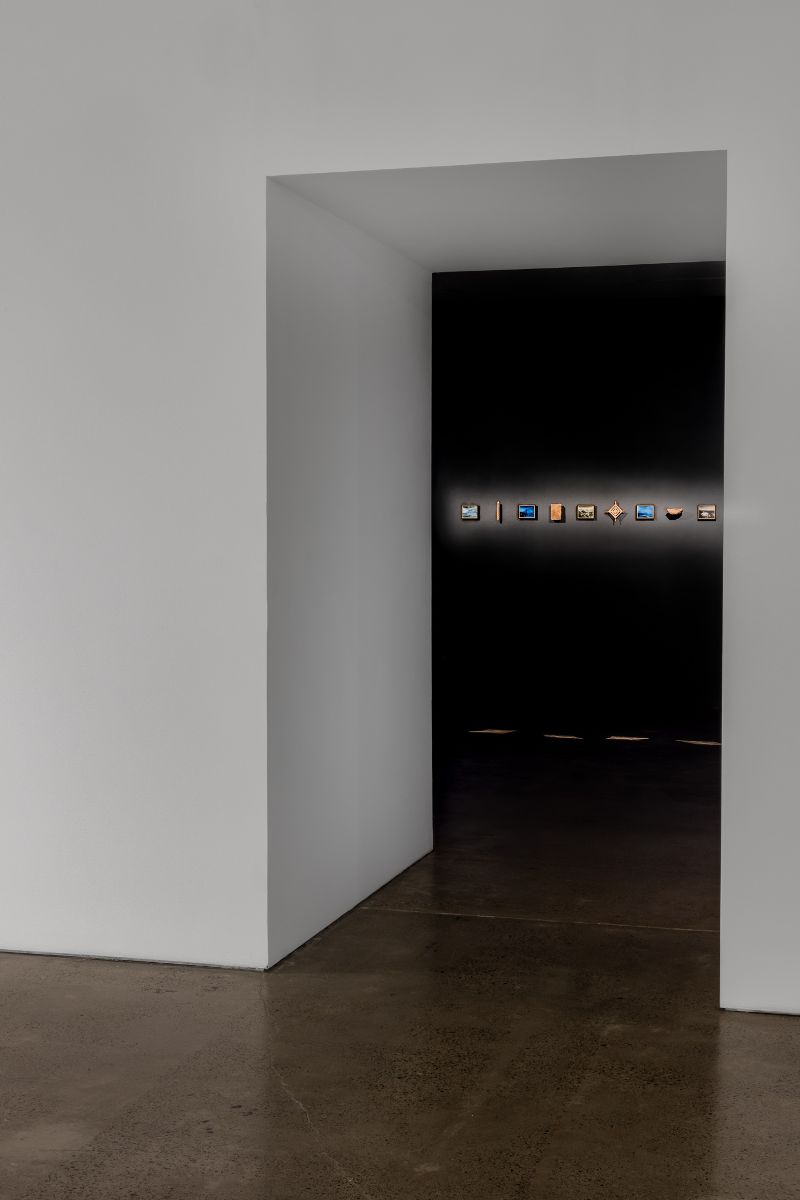
The Darkness of Enlightenment II (2022 –) is an ongoing daguerreotype series that explores the historical records of Kaurna language and culture by nineteenth-century colonists, illuminating the important but complex role these recordings play in Kaurna cultural revival practices. This presentation includes six daguerreotypes, which Tylor has accompanied with cast bronze Kaurna belongings and colonial objects. It is a refined display and perhaps the more successful iteration of the series compared to the 2022 version currently touring the country in the National Gallery of Australia’s 4th National Indigenous Art Triennial: Ceremony.
We cannot forget that Tylor had a stint as a carpenter before he moved into his career as an artist, with his elegant furniture works Fire Country and Warpulayinthi, (both 2022), made with Kamberri/Canberra-based artist Rebecca Selleck. Their inclusion in this exhibition is, for me, what makes this show such a triumph. Warpulayinthi, meaning ‘slavery’, debuted in the 2022 Adelaide Biennial of Australian Art Free/State, and highlights how the ‘free’ colony of South Australia was built on the slave labour of local Kaurna and Nunga people. Tylor’s colonial-esque kitchen furniture paired with Selleck’s cast bronze flora and fauna, speaks to the forced removal of resources, culture, land and liberty.[2]
As Robb states, Turrangka… in the shadows ‘looks at the complex interplay of techniques and the incisive observations on Australia’s fraught history that characterise Tylor’s prolific and profound artistic practice.’[3] And so it does, quietly and powerfully.
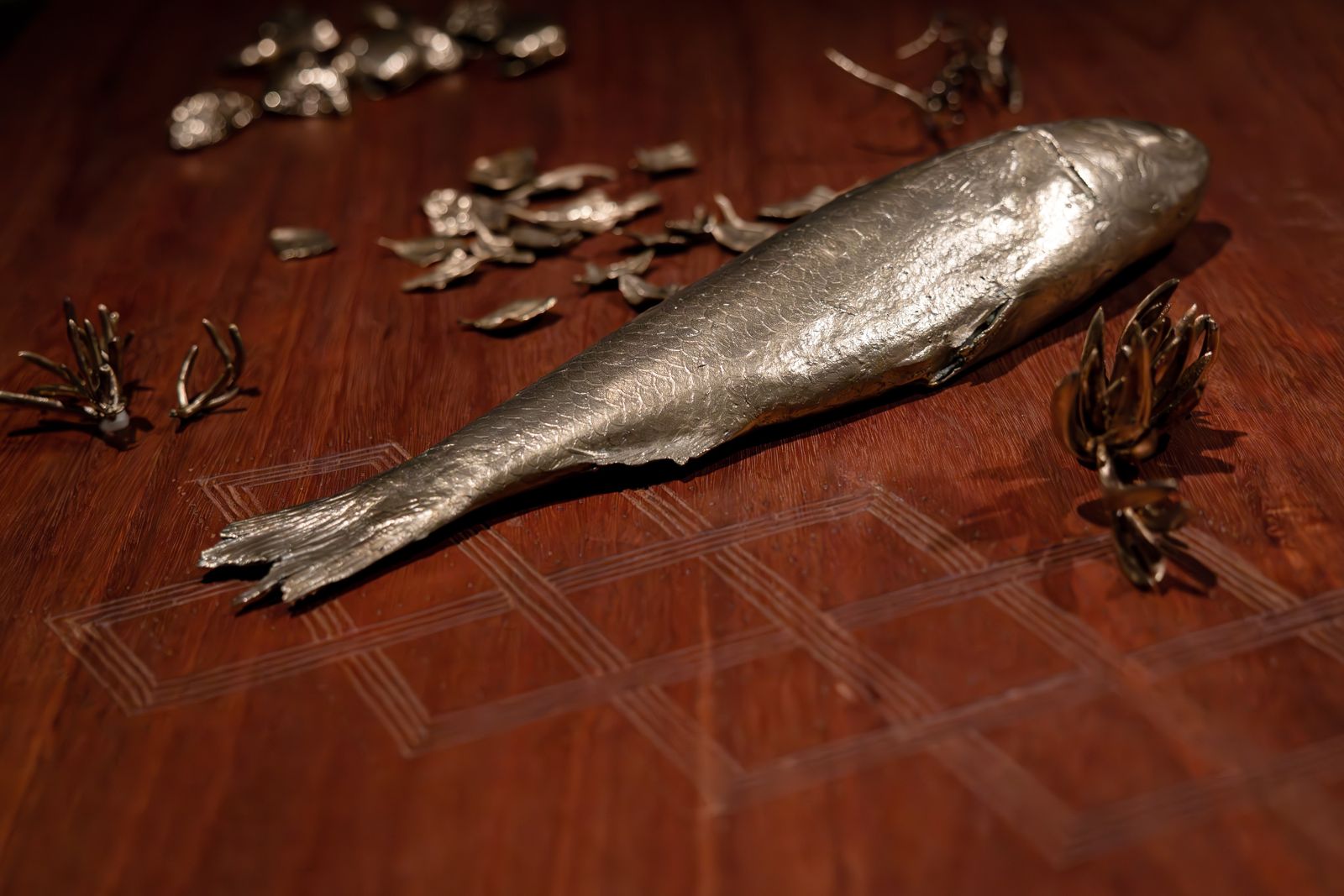
Footnotes
- ^ Nunga is the term for Aboriginal people from South Australia; Yarta is the term for Country or land. Both are drawn from the Kaurna language.
- ^ James Tylor, “Warpulayinthi: Slavery in South Australia,” accessed 24 May 2023, https://www.jamestylor.com/warpulayinthi-new.html
- ^ Leigh Robb, James Tylor: Turrangka… in the shadows room sheet, UNSW Galleries, Sydney, 2023.
